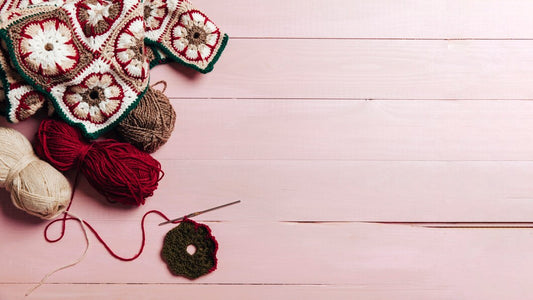
Exploring Historical Textiles: Traditional Knitting and Crocheting Techniques from Around the World
Textiles are a rich part of human history, and traditional knitting and crocheting techniques have been passed down through generations, reflecting cultural heritage and creativity from various regions. In this exploration, we delve into the diverse and fascinating world of historical textiles, discovering traditional knitting and crocheting techniques from different parts of the globe.
1. Aran Knitting (Ireland)

Aran knitting originates from the Aran Islands in Ireland and is known for its intricate cable patterns that symbolize different aspects of island life, such as fishing nets and family clans. Traditional Aran sweaters are not only beautiful but also functional, providing warmth and durability in harsh weather conditions.
2. Fair Isle Knitting (Scotland)

Fair Isle knitting hails from the Fair Isle, a small island in Scotland. This technique involves using multiple colors in a single row to create intricate and colorful patterns. Traditionally, Fair Isle patterns are inspired by nature, featuring motifs like birds, flowers, and geometric designs.
3. Peruvian Textiles (Peru)

Peruvian textiles have a rich history dating back thousands of years to pre-Columbian civilizations like the Incas. Techniques such as backstrap weaving and knitting with alpaca and llama wool are still practiced today, showcasing intricate patterns and vibrant colors that represent Andean culture and beliefs.
4. Japanese Boro Stitching (Japan)

Boro stitching is a Japanese textile art form that originated from the practice of reusing and patching old garments to extend their lifespan. This technique involves layering and stitching scraps of fabric together, creating beautiful and unique patterns that reflect a philosophy of sustainability and resourcefulness.
5. Tunisian Crochet (Tunisia)

Tunisian crochet, also known as Afghan crochet, combines elements of crochet and knitting. With a long hook resembling a knitting needle, stitches are worked in forward and return passes, creating a dense and textured fabric. Tunisian crochet has a rich history in North Africa and the Middle East, with patterns ranging from simple to intricate lacework.
6. Scandinavian Knitting (Nordic Countries)

Scandinavian countries like Norway, Sweden, Denmark, and Iceland have their own knitting traditions characterized by intricate colorwork, geometric motifs, and use of natural fibers like wool and mohair. Sweaters such as the Norwegian Selbu and Icelandic Lopapeysa are iconic examples of Scandinavian knitting.
7. Oya Lace (Turkey)

Oya lace, also known as Turkish needle lace, is a delicate and intricate lace-making technique from Turkey. It involves using a thin needle to create lace edgings, motifs, and jewelry. Oya lace has been part of Turkish culture for centuries, adorning garments and accessories with exquisite craftsmanship.
Traditional knitting and crocheting techniques from around the world offer a glimpse into the rich cultural heritage and artistic expressions of different societies. Exploring these techniques not only allows us to create beautiful and unique textiles but also deepens our appreciation for the craftsmanship and creativity of generations past. Incorporating elements of traditional techniques into modern projects can add a touch of history and cultural significance to our handmade creations, bridging the gap between the past and the present in the world of fiber arts.








